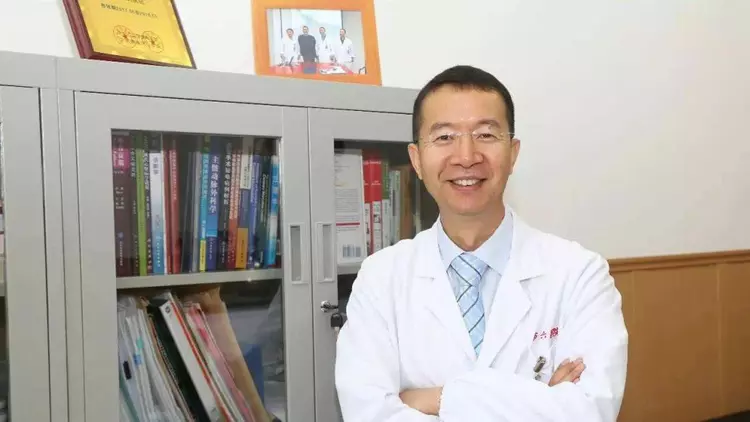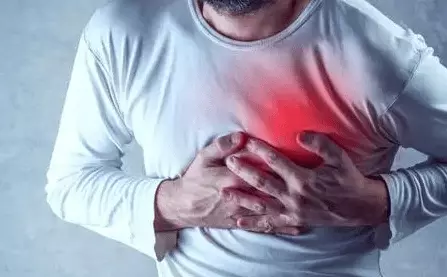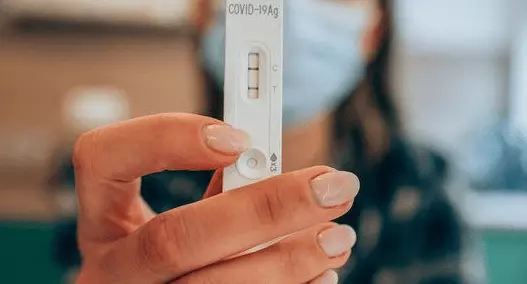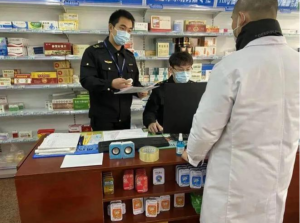
Shen Chengxing, director of the Department of Cardiology at Shanghai Sixth Hospital: 99% of patients with new crowns can be excluded from myocarditis

Shen Chengxing, director of the Department of Cardiovascular Medicine at the Sixth People’s Hospital of Shanghai Jiaotong University. File photo
The recent cases of myocarditis caused by the neo-coronavirus have sparked national concern. Since young people are a susceptible group for myocarditis, they are also more worried about the risk of myocarditis complicating the infection and recovery from Neocon.
Shen Chengxing, director of the Department of Cardiovascular Medicine at the Sixth People’s Hospital of Shanghai Jiaotong University, pointed out in an interview with Punch Technology that foreign studies have shown that the incidence of myocarditis among patients with new coronary heart disease is 2 per 1,000 to 4 per 1,000. The vast majority of myocarditis can be self-healing, the rate of severe disease is very low, and early treatment is also very good, but should be wary of “myocarditis phobia”, resulting in the aggravation of symptoms of new crown.
Shen Chengxing said that recently, his cardiology department daily clinic volume in three to four hundred people, about half of the patients are new crown infection after seeking examination to exclude myocarditis, “can say 99% can be ruled out, this proportion I think is still quite gratifying.” Among the patients he saw with new coronary, four cases of myocarditis were confirmed, most with mild symptoms, mainly tachycardia, and one severe case was discharged from the hospital.

Infographic
Myocarditis associated with new coronary heart disease, not necessarily two weeks later
Epidemiological statistics show that before the new coronary epidemic, the estimated global incidence of myocarditis was 1 in 100,000 to 1 in 10,000 per year, with young adults and men between the ages of 20 and 40 being the high-risk group. In contrast, CDC data suggest that men, adults over 50 years of age, and children under 16 years of age are at high risk for neostriatal (Covid-19)-associated myocarditis.
A retrospective international cohort study including European and American populations included 56,963 hospitalized patients with neo-coronary (Covid-19), with a prevalence of 2.4 cases/1000 patients with clearly diagnosed or likely myocarditis, and 4.1 cases/1000 patients when cases with likely myocarditis were included. The median age of the patients was 38 years and 61.1% were male. A Korean study included 181,656 hospitalized patients, and the prevalence of myocarditis/pericarditis was 0.08% (0.78 cases per 1,000 hospitalizations) during the follow-up period.
“Many viral infections can affect the myocardium and thus cause myocarditis, and if myocarditis develops after a neo-coronary infection, there is usually a direct link between the two because it is difficult to rule out other factors as well.” Shen Chengxing said that direct evidence of myocarditis triggered by neo-crown is the discovery of viral particles in myocardial biopsies or a significant increase in antibodies against neo-crown virus in them, “but the relevance and specificity of the latter may not be very strong either, and at this stage this is hardly used clinically to confirm.”
Shen Chengxing introduced the pathogenesis of neo-coronary-associated myocarditis in two ways: one is that the neo-coronary virus replicates and multiplies in the body, and although the respiratory tract is the main focus, it can also attack all other organs; the other is that in the process of fighting the virus, the body’s own immune cells may generate an inflammatory storm that can also cause damage to other organs, of which myocardial damage is one. “The former pathogenesis is not dominant, but we cannot exclude this possibility, so we should also try to be vigilant.”
Some experts believe that it is easy to get myocarditis about two weeks after the onset of a new crown, Shen Chengxing does not agree, “The timing is not that clear, it can happen within a week.” A British statistic proves this point: in the general population, there were 40 additional myocarditis events per million people after new coronavirus (SARS-CoV-2) infection, with an incidence rate ratio (IRR) of 21.08 for myocarditis 1-7 days after a positive new coronavirus test, 11.29 for IRR 8-14 days, 5.36 for IRR 15-21 days, and 21-28 days for IRR was 3.08.
Shen Chengxing pointed out that this is because the virus can attack the myocardium right after a new coronary infection, and there is individual susceptibility to myocarditis, which does not exclude individuals from developing fulminant inflammation. Accordingly, if a young person has never had myocarditis caused by a cold before the age of 25, there is no need to worry too much about developing neointimal-related myocarditis.

Figure
Myocarditis can heal on its own, pay attention to more rest
Shen Chengxing introduced, clinically to diagnose neo-coronary-related myocarditis, first to determine the viral infection, followed by the exclusion of other heart diseases such as myocardial infarction. “The manifestation of myocarditis is mainly panic and shortness of breath, usually the chest pain is not as intense as myocardial infarction. The two manifestations are sometimes difficult to clearly identify, but most young people are more likely to have myocarditis.”
To confirm a diagnosis of myocarditis, you first need a blood test. Markers of myocardial injury include cardiac enzymes and troponin, both of which are elevated, suggesting myocardial injury, and BNP, a marker of heart failure, which is also elevated. For imaging, a cardiac ultrasound is required, which may show enlargement or reduced contractility of the heart. An electrocardiogram may suggest premature beats, ST-segment changes, tachycardia, and other manifestations. Myocardial magnetic resonance can see the edema of the heart muscle wall, which is the “gold standard” for the diagnosis of myocarditis.
The majority of cases of myocarditis can be self-healing, the main method is to rest and reduce the oxygen consumption of the heart muscle, said Shen Chengxing. At present, the cardiac MRI appointment takes a little longer, while simple blood tests, ECG and ultrasound are very good and can be done on the same day, don’t wait a week or two before doing it, then some people will be too late.”
For patients with severe disease, they can be treated with hormones and antiviral drugs, and cardiac support, such as ECMO or IABP (intra-aortic balloon counterpulsation technique), is considered only in cases of hemodynamic instability, “which is, after all, a very small number, and the early treatment of myocarditis are very good, and the incidence of new coronary-related severe myocarditis should be less than one in a thousand. “
“Some time ago when there was no new crown pandemic, we saw a patient with severe myocarditis, which was caused by a common viral infection.” The new virus is just one of all the viruses that can cause myocarditis,” Shen Chengxing stressed. “Now people feel that the rate of severe myocarditis associated with the new virus is relatively more, but in fact it is only because the base of infection has become larger.”
Alert to “myocarditis phobia”
On December 25, a team of German researchers published a paper in the Nature-affiliated journal Signal Transduction and Targeted Therapy, finding that among human cardiomyocytes differentiated from iPSC, the Omicron BA.5 mutant strain has a stronger ability to replicate and damage human cardiomyocytes than the BA.1 mutant strain, similar to the Delta mutant strain. The scientists also specifically pointed out that the study was carried out in isolated human cardiomyocytes, and whether this phenomenon exists in humans requires further exploration by research.
In this regard, the surging technology reporter consulted a researcher dedicated to the study of heart disease mechanisms, and he had reservations about the conclusions of the article, “iPSC differentiated cells are very immature and differ greatly from real heart muscle.”
Shen Chengxing, on the other hand, believes that the new coronavirus mainly infects the respiratory tract, not the heart muscle, and has a significantly heavier impact on the respiratory tract and lungs, and that all other viruses can also infect the heart muscle, not that infection of the heart muscle means that the strain is more virulent, “There is not enough evidence in this regard. We do not feel how much heavier the myocarditis caused by the new coronavirus is compared to ordinary viruses, and it is about the same from foreign literature reports.”
Shen Chengxing suggested that now we should instead be wary of “myocarditis phobia”, which wastes a lot of energy and money and causes problems instead. For example, he admitted a young man of 32 years old a few days ago, after the new coronary infection has turned negative, but claimed that “hands can not move, heartbeat 124, less urine, bleeding”, labeled himself as “renal failure” and “platelet After checking online, the more he thought he was “seriously ill with myocarditis” and that his life would be in danger at any time if he was not admitted to hospital, it was too late to save him.
Even though the examination found that the troponin index was negative, he also took out the results of the Internet search and insisted, “There is a kind of serious illness, troponin is negative.” Let Shen Chengxing cried and laughed, “In fact, I think he does not need to be hospitalized, his heart function is good, the heart beating fast is likely because of the tension, to the night measured is normal.”
“New crown virus infection, respiratory involvement, itself will have chest tightness, shortness of breath, palpitations, can not be attributed to myocarditis, but rather sympathetic nervousness and excitement, resulting in increased myocardial oxygen consumption, will add re-crown symptoms.” Shen Chengxing reminded young patients that they must pay attention to rest after viral infection and should not exercise vigorously during the recovery period, so that they can avoid many serious situations after myocardial injury.


Average Rating